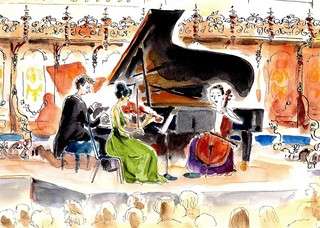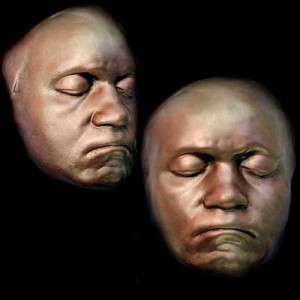|
Back
Introducing Young Mr. B New York
Alice Tully Hall, Lincoln Center Complex
05/18/2010 -
Ludwig van Beethoven: Piano Trio in E Flat Major, Hess 47 (New York Premiere) – Piano Trio in D Major, Kinsky/Halm Anhang 3 (New York Premiere) – Piano Trio in E Flat Major, Opus 63 (New York Premiere) – Piano Trio in B Flat Major, Opus 97, “Archduke”
The Beethoven Project Trio: George Lepauw (Piano), Sang Mee Lee (Violin), Wendy Warner (Cello)

The Beethoven Project (© Artist Pat Byrnes )
I once saw a guide in the Cairo Museum explaining a pair of display-case skulls to a tour group. “This large skull,” he said, “is the skull of Cleopatra in her last years, when she reigned as Queen of Egypt. And the small skull is the skull of Cleopatra as a young girl.”
Nobody in the tour group even blanched.
Last night, the aptly named Beethoven Project, three very exciting young players, introduced the skill of Beethoven before he even became the Beethoven that we know, finishing with the more familiar “Archduke” Trio. The latter lacked the palpable excitement of three New York premieres, and was rather bland. But the differences–and similarities–of the two Beethovens made this an entrancing evening.
Part of the fascination was reading the program notes. Not about the music of the trios (which spoke for themselves) but about the bewildering Beethoven rewrites from one form to another, how the manuscripts disappeared and were recovered. Far too complex for this column, but a boon for musical historians.
The first work, for example, has no opus number, but musicologist Willy Hess listed it as the rewrite of another trio in six movements–for which Beethoven finished only the single movement played here. Great music it was not, partly since the Allegro con brio directions lacked much brio from the Beethoven Project. The difference from Haydn, Mozart et al came from the explosive sounds, which were sudden, unexpected and very much Beethoven. Add to that the Beethoven false endings–one for the recapitulation, one before the last chords–and we had, yes, an 18th Century movement, but one which showed the young composer at work.

Death masks of Beethoven (© The Beethoven Project)
The next trio movements, were written five years later, in 1794. The manuscript was missing 33 bars, but musicologist Robert McConnell reconstructed them. Yet was this really a work of young Ludwig? For awhile, it was listed in the Mozart catalogue, and scholars still are unhappy that Beethoven’s unforgettable scribble is not on the manuscript.
But musical forensic scientists are always on the prowl, and they discovered that one of Beethoven’s brothers had apparently rewritten it from Beethoven’s original. Certainly in form, the two movements could have been Mozart…or Haydn. But those two had unerring Classical balance. The work uses violin and cello as accompaniment to the virtuosic piano, played here very elegantly indeed by French pianist George Lepauw. Both movements had hunting-horn themes, which might have indicated originally a wind piece.
The longest premiere work was a supposed Opus 63, and the history of its composition as wind quintet, trio, string quintet etc etc is utterly boring except to the scholar. What we have, though, is a full-blown four-movement trio, which was probably written by Ludwig (or transcribed by Carl Czerny)
Opus 63 was certainly attractive, elegant, well-played by the group, and had an entrancing scherzo. One thought most of a flirtatious aria or two from Fidelio, for this was flirtatious teasing music, the instruments virtually titillating each other with their sounds. The final Presto was played with great excitement and non-stop humor by the Beethoven Project.
It took the “Archduke” to show what the Beethoven Project Trio could do without the novelty of three premieres. Formed just two years ago, they have gone all out to show Beethoven with a “new vitality”, and by working in archives, they realized that could introduce Beethoven music for the first time (These were New York premieres, the world premieres having taken place in Chicago.)
The “Archduke” was performed with technical care, excellent blance for the finicky Alice Tully Hall, and was received with great applause by the relatively paltry audience. (It’s difficult to understand New York audience. When the pre-eminent Penderecki conducted four of his own works two weeks ago, seats were a-plenty. With premieres of Beethoven, Alice Tully was only two-third filled). The playing flowed gently, the third-movement variations built to great intensity, and the ending had a gypsy lilt.
But this wonderful work was perhaps too caring, too practiced, without the Beethoven vibrant feeling which this group longs for. Never mind. After two years, they produced four different Ludwig “skulls”, each giving a musical clue to the mystery of this most enigmatic composer.
Harry Rolnick
|